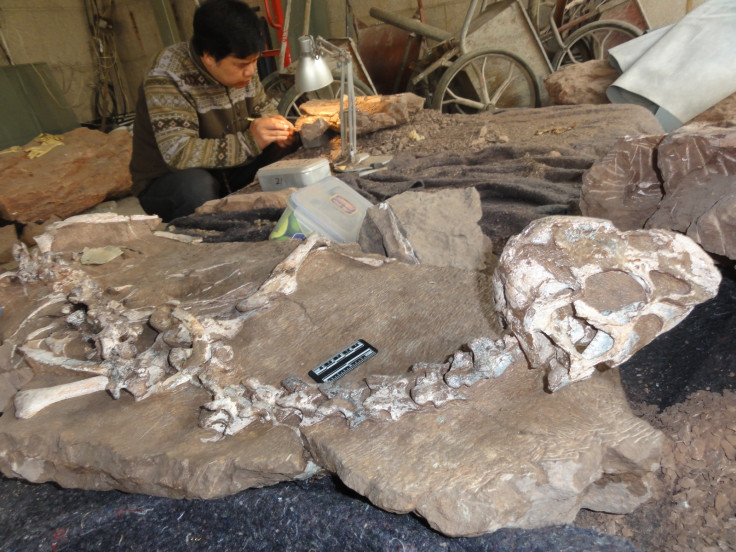'Mud Dragon' dinosaur fossil uncovered in Chinese dynamite explosion remains largely intact
The fossil suggests that a group of feathered dinosaurs was thriving right before the mass extinction.

A dinosaur fossil found in at a building site in China – nicknamed 'Mud Dragon' – has added to evidence that bird-like group of dinosaurs was evolving rapidly before the mass extinction at the end of the Cretaceous period.
The fossil suggests that groups of feathered dinosaurs were thriving right before the mass extinction.
Mud Dragon has been identified as a new species of oviraptorosaur, and has been given the formal name Tongtianlong limosus – meaning "muddy dragon on the road to heaven".
The dinosaur is believed to have come to a sticky end. Steve Brusatte of the University of Edinburgh, who was involved in the excavation of the dinosaur and co-authored the paper on the findings published in Scientific Reports, says that it is one of the saddest fossil finds he has ever encountered.
Stuck in the mud and then blown up
"It's sad in the sense that the dinosaur got stuck in the mud and that's how it died. You can see its neck stretched up and its arms stretched out, trying to free itself from the mud," Brusatte told IBTimes UK. "It's a sad story because this is an animal that died, and you can sense that this was a real animal struggling and dying."
The fossil is thought to be between 66 and 72 million years old. It was discovered by construction workers in Ganzhou in southern China who were building a school.

Mud Dragon was blasted by the dynamite explosives the construction workers used but, apart from some slight damage to its back, the fossil remains almost entirely complete.
"It's always a fine line between discovering things that you never would have seen and blowing them to smithereens," Brusatte says.
Dinosaurs thriving before the asteroid struck
Mud Dragon was a feathered dinosaur in the family of oviraptorosaurs. These dinosaurs had short heads, no teeth and sharp beaks. Mud Dragon has a bony crest on its head, characteristic of oviraptorosaurs, which the scientists believe may have been involved in sexual selection.
This group of feathered, flightless dinosaurs was growing in population and giving rise to several new species in the 15 million years leading up to the mass extinction. Six different species of this group have been found in southern China in the past few years.
There were many related types of dinosaur living alongside each other in this area, as well as large meat-eaters like Tyrannosaurus rex and long-necked herbivorous dinosaurs, Brusatte says. "They were diversifying right at the end of the Cretaceous, right before the asteroid hit," he says.
Study coauthor Junchang Lü, of the Institute of Geology, Chinese Academy of Geological Sciences, says that the discovery of Mud Dragon in the Ganzhou area adds to the huge diversity of oviraptorosaurs from the late Cretaceous. "It will provide important information on the study of evolution, distribution and behaviour of oviraptorid dinosaurs."

© Copyright IBTimes 2025. All rights reserved.






















